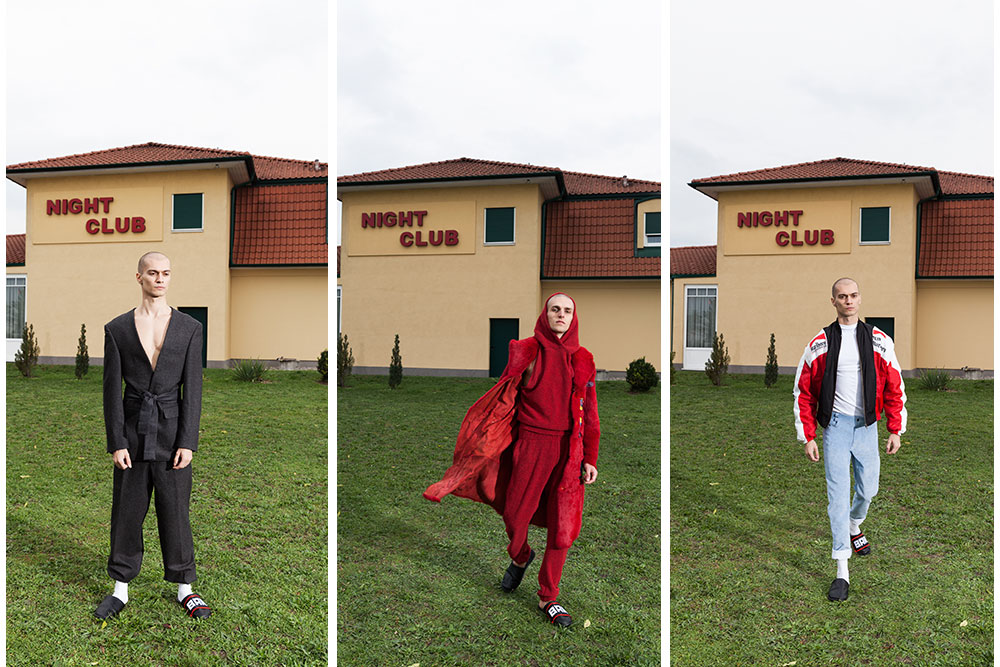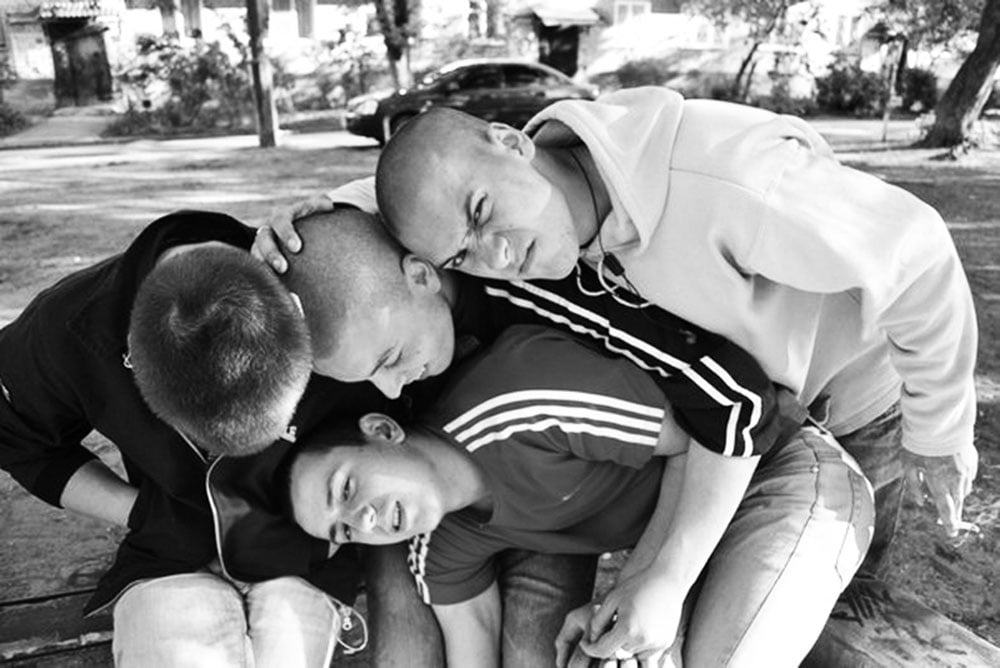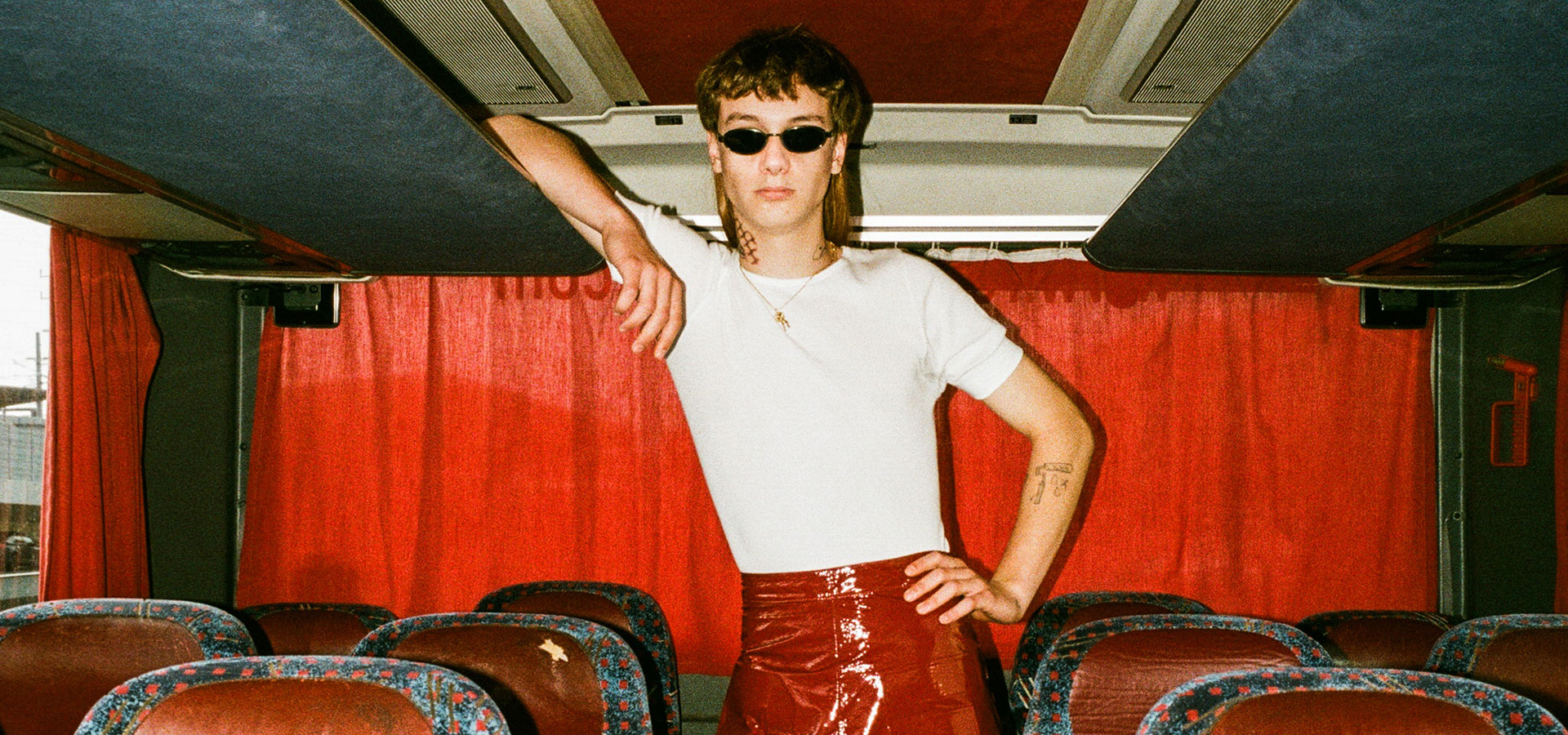Will the real macho man please stand up? Talking masculinity and fashion in Romania with designer Lucian Varvaroi
The nutritionist-turned-designer teamed up with Horatiu Sovaiala and Raya al Souliman to make a fashion film that unpacks the pressures of being macho in Romania — featuring body builders, tracksuits, and tuner cars.
Featuring an array of buffed up “macho men” — lifting weights, bareback riding, or just rocking their buzzcuts out of car windows — you might think that the fashion film for Lucian Varvaroi’s debut collection might at first be poking fun at stereotypes of Eastern European men. But he’s not. The designer says he’s merely reflecting the real-life men around him. “I grew up with this aesthetic. These people [in the video and photographs] might be my cousins,” he says.
Self-irony has been essential to Varvaroi’s designs: helping separate the macho aesthetic he loves from the negative implications of toxic masculinity. A nutritionist by day, the 34-year-old made his first foray into fashion this year with a collection entitled XXX. The fashion film was produced in collaboration with Horatiu Sovaiala and Raya al Souliman, the videographers behind Carnation Studio.
We meet in a Bucharest cafe, together with Varvaroi, Sovaiala, and al Souliman to talk about masculinity, sexuality, and the Romanian style that shaped them.
Varvaroi, tell us how you came to fashion, and the idea behind this collection.
Varvaroi: I’ve always been fascinated with fashion but I grew up in Suceava [a town in eastern Romania], and so the idea of actually making a collection was something from the realm of sci-fi. I would call myself a late bloomer. I’m inspired by the macho aesthetic and the environment in which I grew up. I actually like the aesthetic: for me it comes from a familiar place. There is some humour in this project, but it’s more like self-irony.
Sovaiala: What I like about Varvaroi’s collection is the way that the local context feeds into the designs. The transition from communism to this so-called capitalism brought about a change in masculinity: now you have a man who wants to be seen as handsome and wealthy, fit and elegant, as well as Christian. This is something very familiar to us. We all grew up with it. So our intention for the film was to start a discussion rather than take a stance on the topic.
Al Souliman: For us, it’s important to understand where these characters came from and how they came to be this way. And we’re fascinated by it.
Varvaroi: There is this word “cocalari” that Romanians use (an equivalent to “chavs” in the UK). It’s pejorative, and I don’t use it any longer; I think it’s an insult.
Beyond the aesthetics, what did you want to explore about the macho culture you’re engaging with?
Varvaroi: This aesthetic, which I’m attracted to, comes with its own toxic baggage such as violence, which I reject.
Al Souliman: It’s not just violence. Narrow-mindedness and homophobia are also associated with the macho aesthetic.
Sovaiala: A lot of people would say that they don’t want to have anything with it. But we interpret it in a more positive sense.
Al Souliman: Perhaps if you reclaim it visually you take the power away from it.
The collection is called XXX. How does sexuality come into the project?
Varvaroi: I like making sexy clothes and the name reflects that. But it’s also an homage to many other things. For instance, we still have a lot of tuner cars with XXX number plates, and I am being a bit ironic about that. There’s also Vin Diesel’s XXX films, which idealise hypermasculinity. The fact that I am gay also means I am influenced by a queer aesthetic, but I don’t want it to speak only to a queer audience.
How did you translate your ideas into designs?
Varvaroi: A lot of my visual references are from the end of the 90s and beginning of the 00s — that’s when I started to develop an interest in fashion. The vast majority of clothes produced back then were fakes made in Turkey. Nike and Adidas were seen as luxury brands and promised a higher social status. Men drank counterfeit whiskey, wore tribal tattoos made with improvised devices, and carried a baseball bat in their car for self-defense — masculinity was directly proportional with how good you were at kicking ass.
A going-out outfit for men involved a leather jacket, tracksuit, and trainers. You’ll still see this worn in rural areas: sometimes the tracksuit will be paired with white socks, elegant shoes or sports trousers. All of these references are powerful starting points for the collection.
I thought about the most common elements in a macho man’s wardrobe: the white shirt, tie and the classic suit, worn at special events like weddings, baptisms, or church services; and the everyday leather jacket and tracksuit worn at the gym, BBQ, or when hanging out with friends. I was able to include all these elements through upcycling existing garments (incorporating second hand trainers into trousers, for example). There is a queer aesthetic to my designs because it’s an essential part of me: I like to integrate cutouts to expose the body parts I consider to be sexy, and include bodysuits, lycra underwear, and braces.
But the process was quite organic and emotional. That said, I try to treat fashion in a relaxed way and with a sense of humour.
And what about the production of the clothes?
Varvaroi: I worked with seamstresses in town on the actual production, as working with leather is very difficult and I couldn’t do it myself. Many clothes were upcycled from second-hand buys. We used second-hand trainers, took their slopes off and inserted them in the leather trousers-jackets and the sports top. I also used second-hand ties to make the dress train or the braces under the shirt. I tried to give a new meaning to these classic menswear items.
The characters in your fashion film seem very carefully chosen. How did you find them?
Souliman: Lucian had this idea of including a scene where a car is blessed by a priest; he showed us some Youtube videos of the phenomenon too. Then we found Vasile Serban, a 69-year-old bodybuilder and multiple-time champion who had been a participant on Romania’s Got Talent. We visited him in Constanța (a seaside town in south Romania). Before that, we contacted a fitness association in Bucharest to find a bodybuilder closer to us, but their suggestions were more suited for adverts and commercials. Vasile was unique. We found other models on Instagram and through friends.
How did they react to the clothes?
Al Souliman: Vasile, for instance, is used to being naked as a bodybuilder, so for him Lucian’s clothes weren’t that different.
Varvaroi, was it important for you to be honest about being gay and did that interfere in making the film?
Varvaroi: I would have liked to style them with more sex-appeal but I was worried they wouldn’t want to wear the outfits in that case. Some of the characters are my friends, who already know I’m gay, but with the others I did not feel like it was the right or relevant context to share that. But I was also a bit guarded, I wouldn’t have felt comfortable telling them that because I generally do not feel very safe to say that randomly in Romania.
What other fashion brands do you follow in both Romania and abroad?
Varvaroi: In Romania, a lot of brands are more commercial. I’m interested in menswear, and I really love the Berlin-based brand GMBH, as well as Martine Rose, Y/PROJECT, BARRAGAN and Versace.


